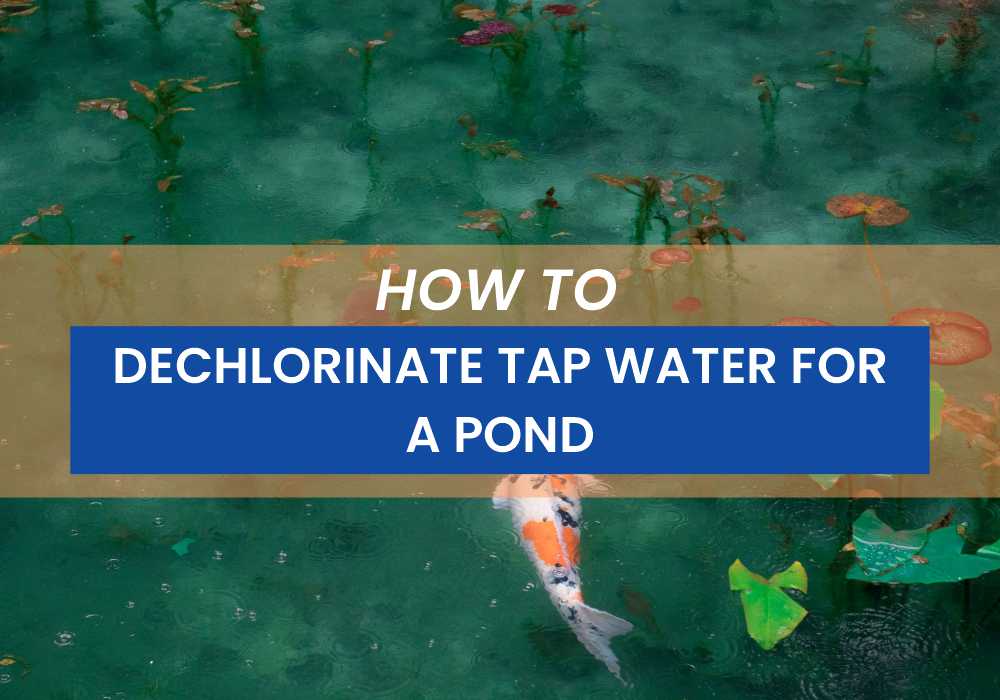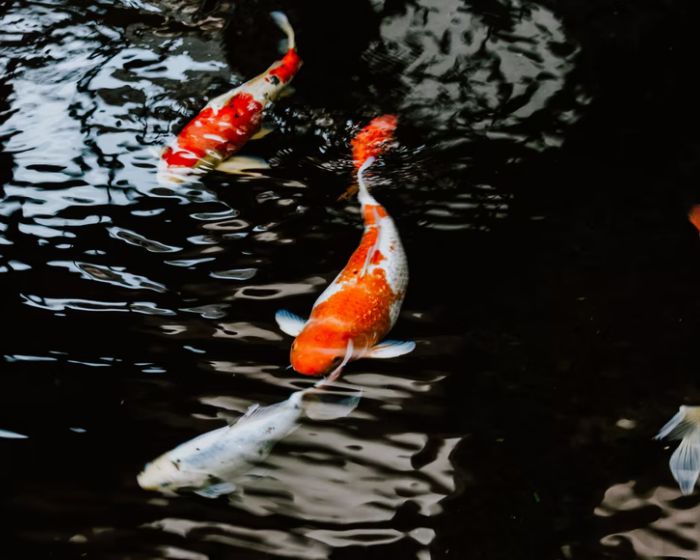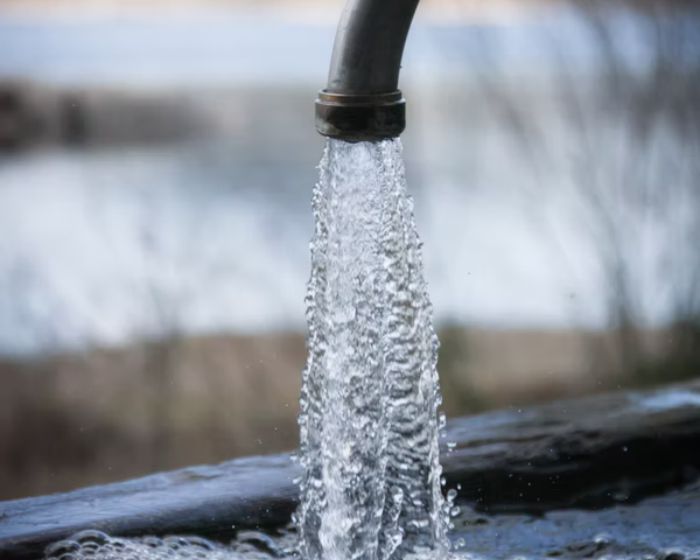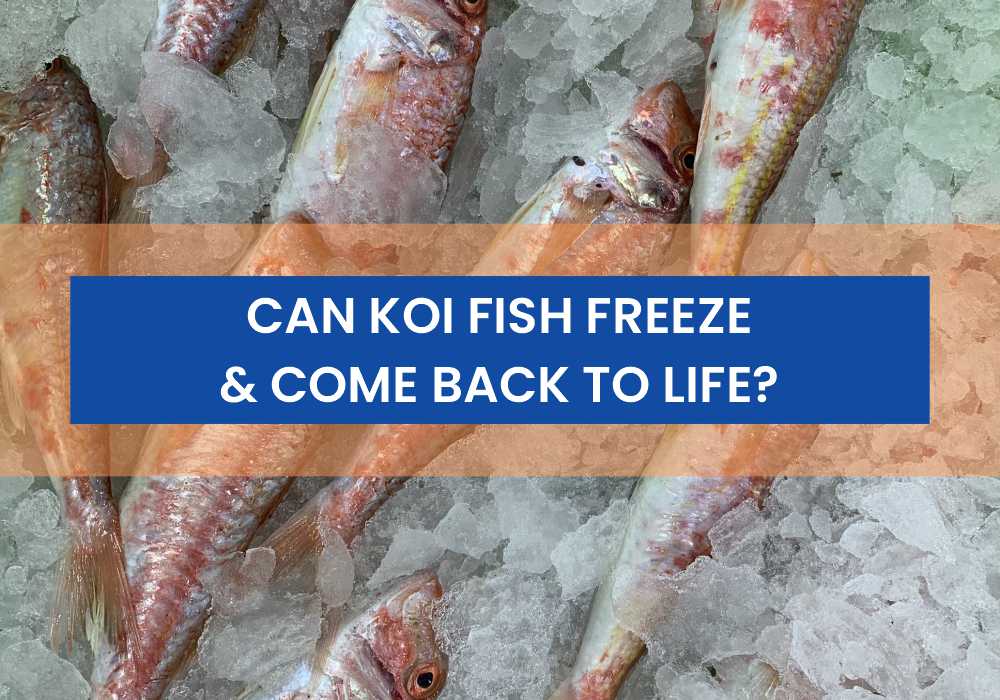As an Affiliate, We may earn a commission that doesn't cost you extra from qualifying purchases using links in this post. It helps keeps this blog running.
As a pond owner like me, who refills my koi garden pond with tap water and wants my pond to always be as healthy as possible for my koi fish and plants. One way to help make the pond fish healthier is by dechlorinating the water. This article will teach you how to dechlorinate tap water for pond quickly and easily using just household items.
But before we get started;
Should You Put Chlorine in Your Koi Pond?
No, you should not put chlorine in your koi pond when your koi fish are still present in it because chlorine can stress and kill your koi pond fish.
As you have probably noticed, the year-round quality of your pond water is very important for both pond fish health and pond plant growth.
The question of whether or not chlorine should be added to your pond depends on your goals for the pond. Chlorine has many uses in treating ponds including algae control, but it should be used with care because of its toxicity to aquatic life. If you are looking simply to kill algae, then chlorine is very effective as a contact algaecide that you can add directly into water where it will form hypochlorous acid and kill algae within minutes.
If you are adding chlorine to your koi pond to control algae growth while also improving water clarity, then there are many other better options that don’t require using powerful chemicals like chlorine, a close example is vacuuming or passing a mesh bag through the filter intake which works well at removing some solids before they break down and cloud the water.
Here’s How To Dechlorinate Tap Water For A Koi Pond
It’s important for pond owners to know that after draining their existing pond water, you want to fill it with fresh water and this water can be from the tap which is always chlorinated. So, it’s important you dechlorinate and improve the water quality so as not to harm your pond fish, and getting rid of chlorine in tap water is not rocket science. There are many ways to dechlorinate water that you can use for filling your pond or irrigating plants. The method you choose depends on how much time and effort you’re willing to put into it and how keen you are about koi pond water quality.
Methods of Dechlorinating Water Before Filling Your Koi Pond
With chlorine present in the pond water supply, adding a specific amount/concentration of common household bleach in proportion to the pond water should make dilute the power of chlorine levels and make it powerless. In essence, adding 1 gallon of household bleach for every 100 gallons of tap water will oxidize out most chlorine but it won’t be as effective as some methods below, so follow up by aerating the entire system for 24 hours to allow the chlorine gas and harmful substances produced by this treatment to escape safely from the pond.
1) Using a system of chemical filters – these are special machines pond owners can get whose job is to make large ponds water safe for pond fish, and you can use this method if you want to fill your pond with chlorinated tap water.
2) Use a two-step aeration process that will remove most of the chlorine from your pond’s tap water stand source before filling it into your pond.
3) You can use an activated carbon filter, a sulfur denitrator, or a biological pond filter to remove chlorine from the water source. These are excellent ways of getting rid of harmful compounds like chlorine and you should make sure your filtration system is equipped with one of these three types to keep the fish healthy.
Conclusion: You can use any or a combination of these methods to get rid of chlorine and remove chloramine from your existing pond water supply before filling it into your pond.
How Long Does it Take For Koi Pond Water to Dechlorinate?
It will generally take one day or less for koi pond water to dechlorinate. If it takes longer than a day, then there is either too much chlorine and chloramine in the water or there are other harmful substances such as ammonia nitrogen and nitrate nitrogen that need to be tested for.
Even though there is no specific time for the chlorine levels in a koi pond water to dechlorinate, it depends on factors such as the volume of water and the level of other contaminants in the water. If there are a lot of chlorine and chloramine molecules, then it will take longer for them to break apart into chloride ions and nitrogen gas.
The pH and temperature can also affect the amount of time it takes pond water to dechlorinate. The higher the pH level, the more hydrogen ions are available to break apart chloramine into chloride and ammonia. If there is a lot of chlorine in your existing pond water supply, then it will take longer for it to break down into chloride because there are fewer hydrogen ions. A lower temperature slows down chemical reactions. Therefore, it will take longer for pond water to dechlorinate at a lower temperature.
Does Aerating Water Remove Chlorine?
Absolutely, aerating your koi pond water will remove the chlorine in it. Aeration is a popular choice of dechlorinating chlorinated water like tap water because it’s cheap and doesn’t have any resulting health issues.
To dechlorinate pond water and evaporate chlorine, simply use an air pump or garden hose to pass air through the water. Tightly hold the tubing of either your air pump or garden hose in a jar or container with holes on its lid so that the bubbles can escape out of the container. Make sure the tubing creates a loop so that it doesn’t interfere with the air pump.
How Long Does it Take For Chlorine to Evaporate From 1 Gallon Of Tap Water?
For chlorine to evaporate completely from 1 gallon of tap water it will take approximately 2 to 4 hours. It will be dramatically faster if you are boiling it, and we are talking minutes.
Chlorine will take up to 4 and a half days to evaporate from 10 gallons of water that are just sitting there. There are things that can speed up the process though, like ultraviolet light, water circulation, and aeration. It will take 6 to 8 minutes to evaporate chlorine in boiling water, which is why boiling water is the fastest way to get rid of chlorine in tap water alongside other organic pollutants.
How Can I Make Tap Water Safe For My Pond Fish?
You need to dechlorinate tap water so it can be safe for your koi fish pond. One easy way to dechlorinate tap water is to let the water sit so the chlorine can evaporate and then proceed to purify it with a water filter. Many people mistake this as a difficult step, but in actuality, it takes very little effort and makes the tap water completely safe for your pond fish and the aquatic life in it e.g: Koi Fish.
If you have just moved into a new home with garden ponds already installed, chances are the water coming out of your tap directly from the water company contains chlorine and other harmful chemicals. Chlorine is added to municipal water systems by the water company to kill bacteria, which are commonly found in drinking water because it has not been pre-treated before being processed.
One way you can make sure all the chlorine has evaporated out of your pond water is by letting the water sit for about 24 hours. The chlorine will naturally dissipate when exposed to air. Remember, never add water from a tap directly to your pond because it contains harmful chemicals that are not safe for the fish or the environment. In this case, you will need to use a water filter.

I’m Akin Bouchard. Even though I now own several different fish species, I first became a koi pond owner because I loved these creatures and wanted to turn my passion into something more serious. I take pride in my collection of koi fish and love sharing my knowledge with others interested in these beautiful creatures.
A Comprehensive Guide to Training Your Fish to Perform Amazing Tricks Feats




